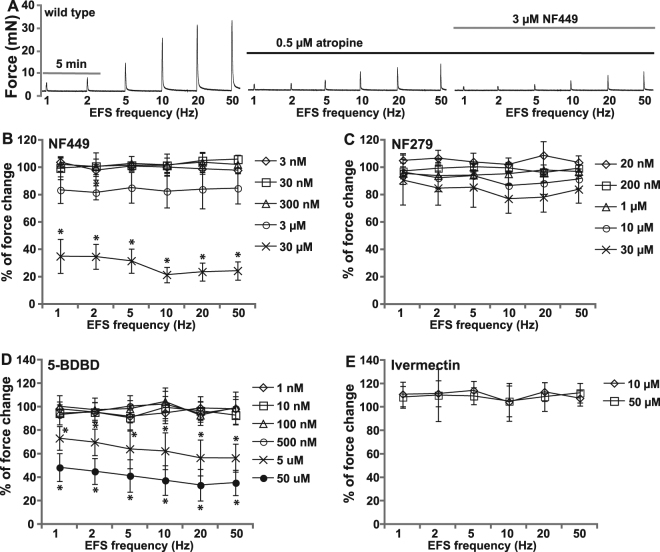Figure 1.
Pharmacological properties of BSM contractility. BSM strips were stimulated by EFS at indicated frequencies in increasing order ((A)-left). Raw data showing effect of sequential addition of atropine and NF449 (pre-treatment 15 min) on EFS force ((A)-right panels). Selective P2X1 antagonists NF449 ((B), n = 7), NF279 ((C), n = 4), or selective P2X4 antagonist 5-BDBD ((D), n = 7), or P2X4 potentiator, Ivermectin ((E), n = 8) were then added at indicated concentrations (with accumulative addition) for 15 min to measure the atropine-resistant force change in BSM contraction in response to EFS. Force changes were normalized to control and shown as percentages. These data indicate that P2X1 and P2X4 antagonists only partially inhibit BSM atropine resistant force at relatively high concentrations. Ivermectin, a P2X4 potentiator, does not increase BSM atropine resistant force significantly. BSM atropine resistant force before drug treatment was used as control (100%), and drug effect (inhibition or potentiation) was normalized to control. Data were analysed using one-way ANOVA and then Bonferroni’s multiple comparison post-hoc tests. * indicates P < 0.05 when compared to control.

